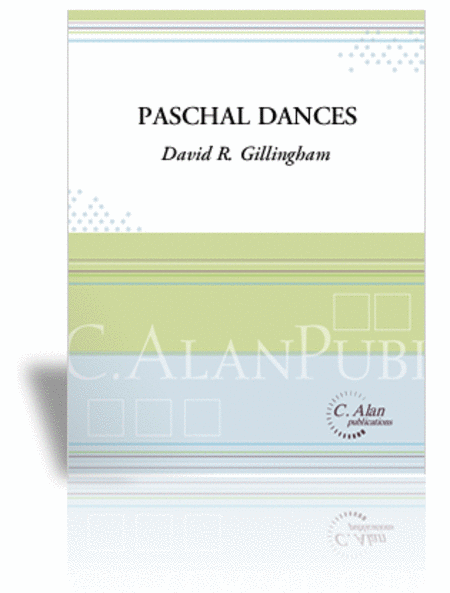Paschal Dances
-
Ships in 3 to 4 weeks
Details
Description
SKU: CN.01851
Composed by David Gillingham. Score only. Duration 10:00. Published by C. Alan Publications (CN.01851).Paschal Dances is based on the first two lines of the famous Gregorian Easter sequence, Victim paschali laudes (Praises to the Paschal Victim). Motives and phrases of the chant are used to unify the work which comprises an Invocation, 4 Dances, 2 Interludes, and a Benediction. Unmistakable Gillingham, so you know it's great music!
Dedicated to Robert Hohner and the Central Michigan University Percussion Ensemble, Paschal Dances is based on the first two lines of the famous Gregorian Easter sequence, Victim paschali laudes (Praises to the Paschal Victim). Motives and phrases of the chant are used to unify the work which comprises an Invocation, 4 Dances, 2 Interludes, and a Benediction. In the opening Invocation, the first phrase of the chant tune is played by the orchestra bells and consequently, the first five notes are harmonized by the marimba. The orchestra bells play both phrases of the first line of the chant at the close of the section. Dance I, in fast tempo, is dominated by membrane instruments with interjections of the second line of the chant tune being played by keyboard instruments. The section segues into the first Interlude, characterized by bowed vibraphone and a dirge-like presentation of the first five notes of the chant in the piano. Following, in the same slow tempo, is Dance II, which features chanting of male voices in canon on each of the three phrases comprising the second line of the chant. The first phrase of the chant undergoes metamorphosis in Dance III, becoming a whole-tone configuration. The dance is set in a lively 6/8 meter with periodic episodes of duplets against the triplet division. At midpoint, the dance breaks into quadruple meter with the first phrase of the chant played by the vibraphone moving in triplets. The dance returns to 6/8 meter and elides with the second Interlude, in slow tempo, where fragments of the chant are heard in the bells, chimes and marimba. Following a brief silence, Dance IV ensues with the marimbas elaborating on the whole-tone motive used in Dance III. In very fast tempo, the movement climaxes on a glorious G-flat major chord, which also articulates the beginning of the Benediction. Accompanied by all mallet instruments playing the motive of the first phrase of the chant in different rhythms, the piano, along with voices, state a haunting motive derived from the second line of the chant. The work ends with three tolls of a questioning chord, with each articulation followed by an arpeggiated version of the chord in the upper register of the piano.

 Share
Share